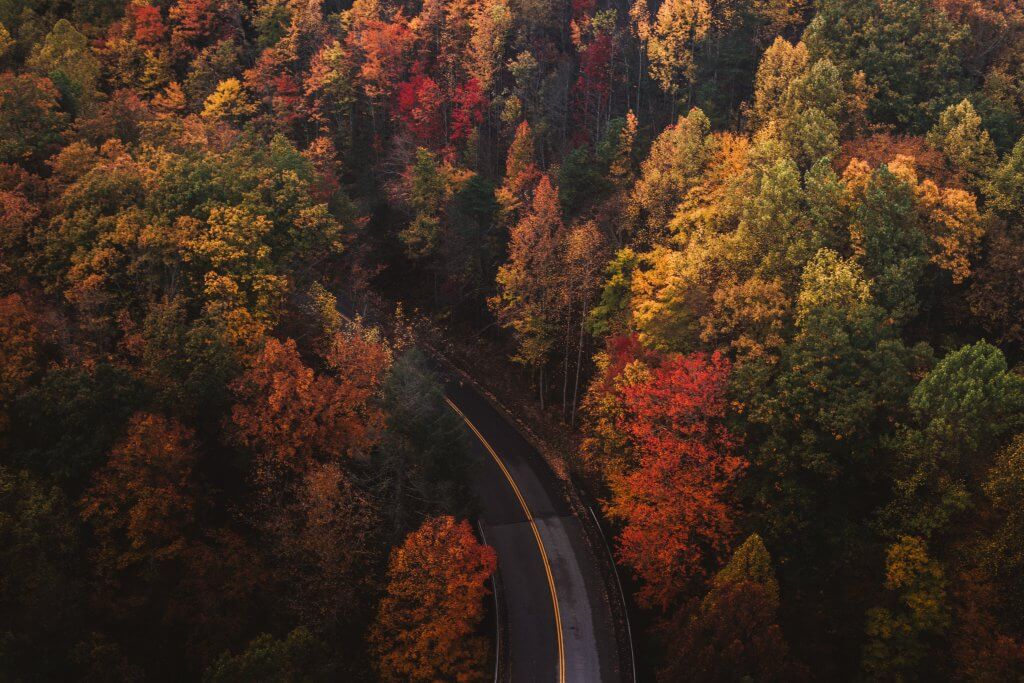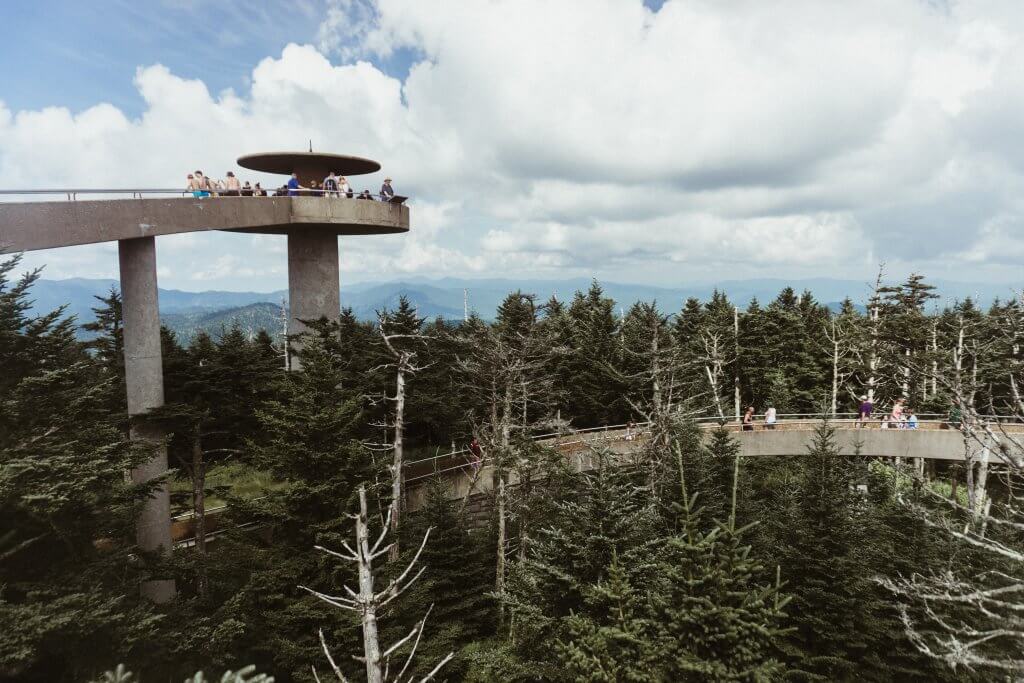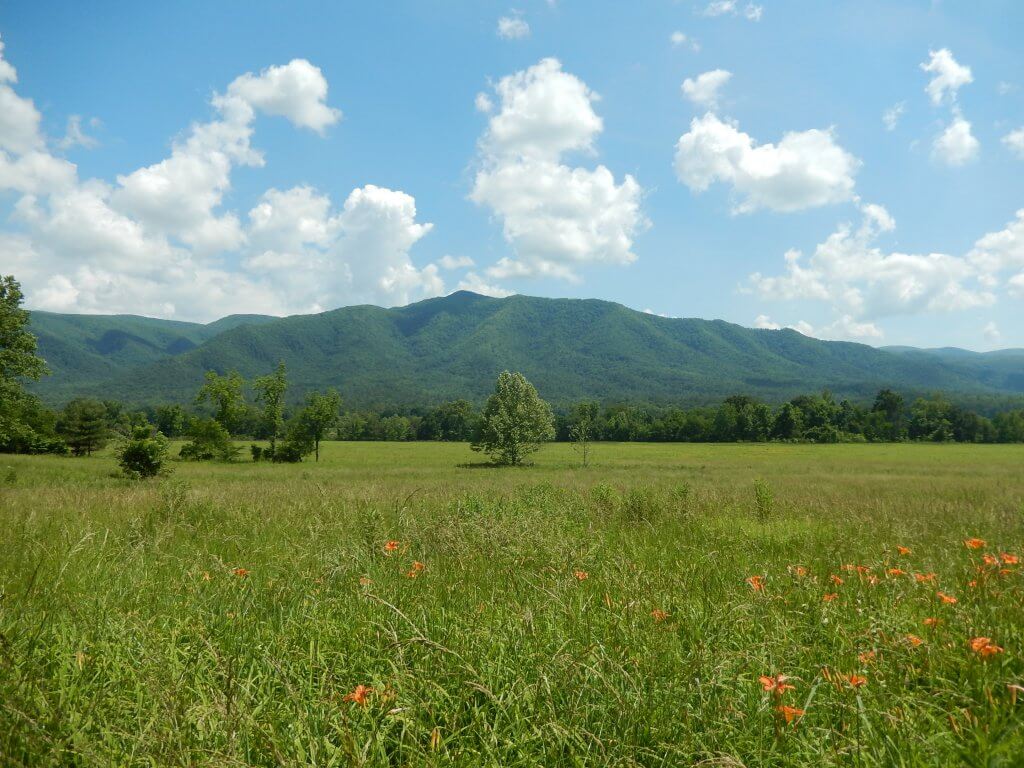The Great Smoky Mountains might be America's most underrated national park.
Spread over 522 thousand acres, this incredible park isn't often mentioned in the same breath as parks like Yellowstone National Park or Grand Canyon National Park, even though it's been America's most visited National Park for several years in a row. In fact, over 12.5 million people visited the Great Smoky Mountains National Park in 2019, more than double the number of visitors as the runner-up, Grand Canyon National Park!
Outdoor lovers flock to the Great Smoky Mountains National Park for a variety of reasons. Straddling the border of western North Carolina and eastern Tennessee, this sprawling land boasts more than 800 miles of hiking trails, including part of the famous Appalachian Trail. It's also well known for its incredible biodiversity, as its lush land and towering mountains provide a home for an incredible array of plants, such as the iconic wildflowers, and animals like black bears, elk, coyotes, bobcats, and countless more.

Things to know about visiting Great Smoky Mountains National Park
First of all, It's free! There is no admission fee to visit Great Smoky Mountains National Park, making it one of America's few free National Parks. Budget travelers rejoice!
Roads and trails in the Smokies close for a variety of reasons, such as inclement weather, changing seasons, and bear sightings. Be sure to double-check before you go.
Be prepared for rain and weather changes in all seasons. It rains year-round in the park – 55 inches per year in the lowlands to 85 inches per year at the highest peak – which can cause road closures, flash floods, and other issues. Pack accordingly and plan some rainy day activities.
Be sure to wake up early if you want to catch the ever-present signature "smoke", a blanket of fog that hangs above the park in the morning hours.

Staying safe in the Great Smokies
Many black bears call the Smokies home. There are approximately 1,500 black bears within the park. When you hike, carry bear spray (and know how to use it) and familiarize yourself with what to do if you see a bear.
If you'll be swimming or doing any water activities, remember that there are no lifeguards within the park. While tubing is a popular activity in some areas, the park does not officially recommend swimming or other water activities. In fact, drowning is one of the park's leading causes of death. Never try to climb to the top of a waterfall, as several hikers have been killed this way due to mist and algae making the rocks extremely slippery.
You can learn more about the National Park Service’s safety guidelines for visiting Great Smoky Mountains National Park here.
Best time to visit Great Smoky Mountains National Park
There really isn't a bad time to visit the Smokies.
Summer (June, July, August) is the most popular season thanks to prime weather and brilliantly colored wildflowers. Summer's popularity is followed very closely by October, as it's the best month to witness the fiery colors of the changing leaves.
If you're on a budget or just looking for a calmer time to visit, consider visiting the park around mid-September when the summer crowds have thinned, the October crowds have yet to arrive, and the leaves have begun changing.
Early spring (March-May) is another budget friendly time to visit without having to deal with winter weather.

Things to do in the Great Smokies
Drive or bike along Cades Cove Loop Road
A vast, lush valley surrounded by mountains, Cades Cove is one of the most popular spots in all of Great Smoky Mountains National Park. Along this 11-mile one-way loop road, you can experience some of the park’s best wildlife viewing. Large numbers of white-tailed deer are a common sight, but spotting other animals such as bears, coyotes, and hogs is also possible.
Cades Cove also reveals the park’s rich history, as you can also see 18th and 19th-century buildings such as a working gristmill, barns, log cabins, several churches.
Cades Cove Loop Road is closed to motorists on Wednesdays from June 17th to September 30th, making it a great time to explore the trail on two wheels.
Take in the park’s best view from Clingmans Dome
At 6,643 feet, Clingmans Dome is the highest peak in all of the Great Smoky National Park. At the end of a steep half-mile trek lies a 54-foot observation tower that provides a stunning 360º view of the park. On a day with good visibility, you can see for over 100 miles!
The half-mile portion of the trail is paved but very steep – a 332-foot altitude gain – so don’t be afraid to take a seat on one of the benches along the way if you get winded. Clingman’s Dome is open to visitors year-round but Clingmans Dome Road closes from December through March due to inclement weather and road conditions.
Roaring Fork Motor Nature Trail
One of the Smokies’ most popular scenic drives, Roaring Fork Motor Nature Trail also offers several incredible stops along the way. Along the 5.5-mile, winding, one-way loop road lies lush forest, historic settler cabins, ample wildlife, and trail access to two of the Smokies’ most popular waterfalls: Grotto Falls and Rainbow Falls.
If you really want to get up close and personal with a waterfall, take the Trillium Gap Trail to Grotto Falls, the only place in the entire park where you can walk behind the cascading falls.
Witness the synchronous Fireflies light up the night
For about two weeks each year, thousands of the Great Smoky Mountains’ fireflies come together to synchronize their flashes and truly light up the night.
The mesmerizing, synchronous flash patterns are a part of a mating ritual that people come from far and wide to see. In fact, the spectacle is so popular that the park organizes a lottery for a limited amount of parking passes and shuttle tickets that take visitors from Sugarlands Visitor Center to the Elkmont viewing area. The peak viewing dates change from year to year but generally fall in May or June.
Flying to the Great Smokies
The closest major cities to the Great Smoky Mountains National Park are Ashville, North Carolina and Knoxville, Tennessee. Knoxville’s McGhee Tyson Airport (TYS) is only about 30 minutes from the park’s entrance in Townsend, TN. Asheville Regional Airport (AVL) is about one hour away from the park.
Other options include Charlotte-Douglas International Airport (CLT), a 2.5 to 3-hour drive, and Chattanooga Airport (CHA), a roughly 2-hour drive.

Where to Stay in the Great Smokies
Camping in Great Smoky Mountains National Park
The Great Smoky Mountains National Park offers 10 developed campground locations within the park. Each campground comes with cold running water, flushing toilets, fire grates, and picnic tables. The campgrounds do not come with showers or electricity. Prices range from $17 to $27. Reservations can be made at recreation.gov from 6 months to 1 year in advance, depending on the campsite.
For backpackers looking to hike to their campsite, the park also offers backcountry camping permits.
LeConte Lodge
The famous LeConte Lodge, a collection of wooden cottages, is the only non-tent accommodation within the Great Smoky Mountains National Park. This historic lodge, situated atop the park’s third-highest peak on Mount LeConte, opened in 1926. The lodge retains a rustic, old fashioned feel by offering the most basic of amenities: washbasins, flushing toilets in outhouses, kerosene lamps, and no electricity.
LeConte Lodge can only be reached by hiking, a 5.5 or 9-mile trek depending on which trail you choose. The lodge remains incredibly popular – likely due to the wonderful service and unique accommodation – so reservations should be made months or even a full year in advance.
Nearby Towns
As there are no accommodations within the park, you’ll likely end up staying in one of the surrounding areas, where you'll find plenty of options.
On the Tennessee side, Gatlinburg is one of the most popular places to stay. Serving as a sort of resort town for the Smokies, Gatlinburg is filled with accommodation options ranging from rustic cabins to high-end luxury. Beyond Gatlinburg, the towns of Pigeon Forge, Townsend, and Cosby are all solid options close to the park.
On the North Carolina side, Asheville, Bryson City, and Cherokee are popular choices.
Plan your visit to Great Smoky Mountains National Park
Great Smoky Mountains National Park is America's most visited national park for a reason. But whether you're drawn by the diverse wildlife, the seemingly endless mountains, the lush forests that change with the season, or the views from Clingman's dome, you've just got to see it for yourself. Be sure to save this budget guide, sign up to receive cheap flight alerts, and start planning your visit to the Great Smokies.
Want to get our flight deals as soon as they’re published? Follow Dollar Flight Club on Facebook, Instagram, and Twitter, and join to get email alerts from our deals feed.
BY: ZACH ANDERSON, CONTENT MARKETING & FLIGHT EXPERT
Zach is a digital marketer, copywriter, and flight deal expert at Dollar Flight Club where he helps 1 million people travel more. As a digital nomad, he is deeply passionate about location independence, Thai food, and helping others see the world affordably.


